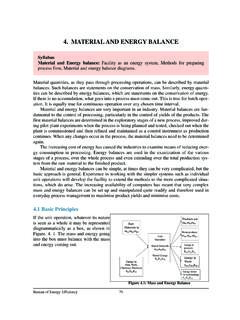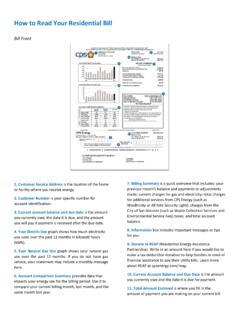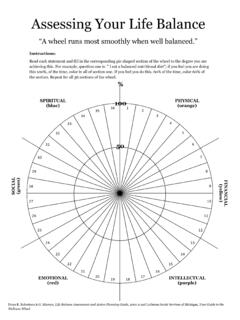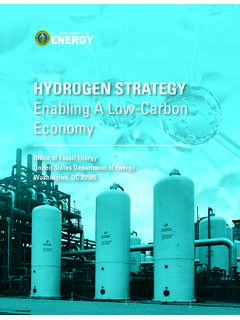Transcription of Biofuels & Greenhouse Gas Emissions: Myths versus ... - …
1 Biofuels & Greenhouse Gas emissions : Myths versus Facts The Department of energy (DOE) is committed to advancing technological solutions to promote and increase the use of clean, abundant, affordable, and domestically- and sustainably-produced Biofuels to diversify our nation s energy sources, reduce Greenhouse gas emissions , and reduce our dependence on oil. energy consumption is expected to grow 50% percent by 2030. Biofuels must continue to play a significant role as we work aggressively to diversify our nation s energy sources and provide a balanced portfolio of energy solutions to help meet our growing demand for energy .
2 In the last year, DOE has announced over $1 billion in multi-year Biofuels research and development projects. Integral to this work is the ongoing examination of reducing Greenhouse gases as well as land and water use. _____ MYTH: In terms of emissions , Biofuels emit the same amount as gasoline or more. FACT: Biofuels burn cleaner than gasoline, resulting in fewer Greenhouse gas emissions , and are fully biodegradable, unlike some fuel additives. Cellulosic ethanol has the potential to cut Greenhouse gas emissions by up to 86%.
3 Ethanol readily biodegrades without harm to the environment, and is a safe, high-performance replacement for fuel additives such as MTBE. Use of ethanol can increase emissions of some air pollutants because fossil energy is used during the farming of biomass crops and during biofuel production. These emissions can be reduced by using renewable power and improved farming methods. _____ MYTH: Ethanol cannot be produced from corn in large enough quantities to make a real difference without disrupting food and feed supplies.
4 FACT: Corn-based ethanol is only one source of biofuel. As we address the technical hurdles associated with the efficient and cost-effective production of Biofuels , ethanol will increasingly play a more significant role. Future ethanol will be produced increasingly from cellulose found in crop residues ( , stalks, hulls), forestry residues ( , forest thinning, wood byproducts), energy crops ( , switchgrass), and sorted municipal wastes. Some promising energy crops grow on marginal soils not suited for traditional agriculture.
5 Ethanol today is produced from field corn, which is primarily fed to livestock and is undigestible by humans in its raw form*. The ethanol production process produces fuel while retaining protein rich livestock feed products (distiller s grain with solubles or DGS). Greenhouse Gas emissions of Fuels Vary byFeedstock and Type of energy Used in Processing The Departments of Agriculture and energy s Billion Ton Study found that we can grow adequate biomass feedstocks to displace approximately 30% of current gasoline consumption by 2030 on a sustainable basis with no conversion of croplands.
6 It determined that billion tons of biomass feedstock is potentially available for the production of Biofuels more than enough biomass to produce the mandated 3 billion gallons of cellulosic ethanol in 2015. The energy Independence and Security Act which responded to the President s call to reduce gas consumption by 20% in 10 years requires use of 36 billion gallons of Biofuels by 2022. Of that goal, we must use 15 billion gallons of cellulosic ethanol. *Source: RFA Resource Center, Ethanol Facts- Food vs.
7 Fuel. _____ MYTH: Ethanol gasoline blends can lower fuel economy and may harm your engine. FACT: Ethanol blends in use today have little impact on fuel economy or vehicle performance. Ethanol has the highest octane rating of any fuel and keeps today's high-compression engines running smoothly. _____ MYTH: More energy goes into producing ethanol than it delivers as a fuel. FACT: Each gallon of corn ethanol today delivers as much as 67% more energy than is used to produce it. Over the last 20 years, the amount of energy needed to produce corn ethanol has significantly decreased because of improved farming techniques, more efficient use of fertilizers and pesticides, higher-yielding crops, and more energy efficient conversion technologies.
8 Ethanol has a positive energy balance - that is, the energy content of corn ethanol is greater than the energy used to produce it and this balance is constantly improving with new technologies. In the future, most ethanol will come from cellulosic ethanol, which delivers up to ten times more energy than is required for its production. _____ As part of President Bush s Advanced energy Initiative, the Department of energy is carrying out a comprehensive plan to increase energy efficiency as well as the use of renewable fuels in the transportation sector.
9 This includes basic and applied research and development projects with a broad range of technology demonstrations to help rapidly bring online next-generation Biofuels . For more information on the Department s work to increase the use of Biofuels , visit: Race cars in the Indy Racing League take advantage of the high-performance benefits of 100% ethanol. Future Biofuels will be made from a wide range of hardy and fast-growing plants, such as switchgrass a perennial grass native to American prairies. Switchgrass requires about a fourth of the irrigation and fertilization of row crops and offers an estimated net energy gain of 343%.
10



















